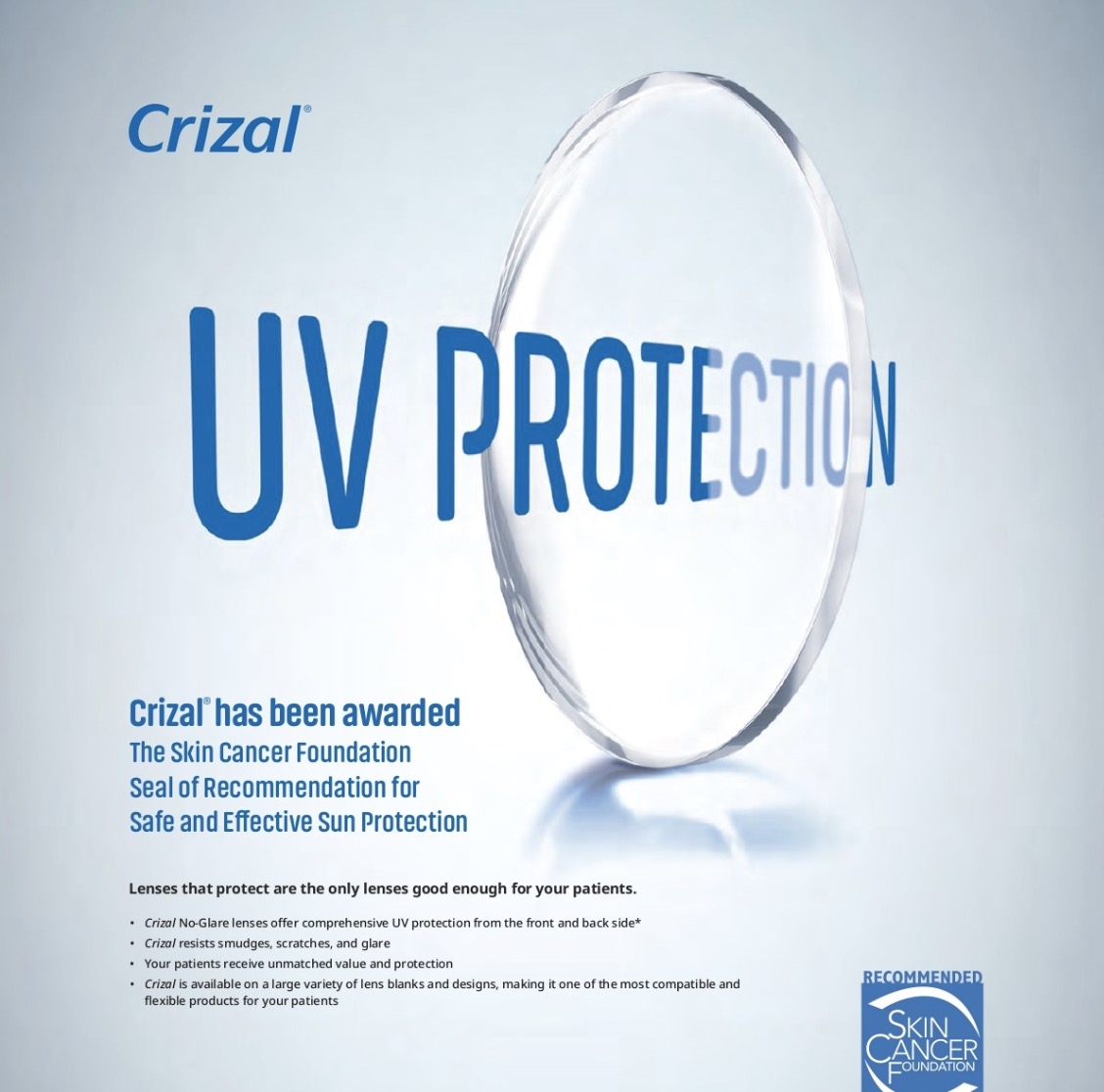Anti-Reflective Coating
What is Anti-Reflective coating?
Anti-reflective coating is also called anti-glare glasses, no-glare coating, and anti-reflective glasses, and it refers to a series of layers that is adhered to the back and front surface of prescription lenses, or just the back of the lens if the lens is polarized. The purpose of anti-glare glasses is to help reduce the amount of reflections on the lens. Consisting of metal oxides, each layer is a thin film that is designed to block a specific wavelength of light. The more layers of film, the more wavelengths that are blocked. AR coating causes the light that reflects from the inner and outer surfaces of each film layer to become equal, thereby canceling each other out.
Do you remember back in the 1990's when anti-glare coating regularly flaked, stained, and got psychedelic colors? It was a nightmare for opticians because customers got angry and would blame them for selling an expensive coating that did not perform well.
Well, the clock has turned and anti-reflective coating is now completely reliable, whether you choose the more expensive Crizal anti reflective coating, or the less expensive anti reflection coatings that are available. Yes, if you leave your anti glare glasses on the dashboard of your car in Florida, the anti-reflective coating could show signs of stress, but this falls in the category of abuse. No-glare coating does cost an additional $20 to $90 depending on the underlying lens, but there are significant benefits to anti-reflective coating. Whether it is right for you - if it is worth the extra cost - is your decision. Your no glare glasses will work fine without anti-reflective coating, but the relaxation to your eyes and improved vision are usually worth it.
Crizal Lenses, No Glare Coating
Crizal is the best known anti-reflective coating on the market, and also the best and the most expensive. Before you choose Crizal, think carefully about whether you even need or want anti-reflective coating on your glasses. Anti-reflective AR coating is chosen by 28.5% of eyewear shoppers in the United States, compared to 50-90% in Europe. There are many reasons that could contribute to this gap, but the primary reason is probably the bad history that anti-reflective AR coating had in its early years. In the 80's and 90's, anti-reflective AR coatings had a single layer which would craze, scratch or smudge easily. Today's AR coatings includes a harder layer of scratch resistant coating, in addition to oleophobic (anti-oil), hydrophobic (anti-liquid), and anti-static layers. These extra layers help to repel the things that lead to smudging and scratching. They also help to make the lenses easier to clean and thereby reduce surface scratches from excessive cleaning.
Premium Anti-Reflective Coatings
Eyeglasses.com offers three basic types of coatings. On our least expensive lenses and within a restricted prescription range, anti-reflective AR coatings are an extra $20. This is possible because the lenses are coated in a mass production of tens of thousands of lenses. On other lenses that are custom made, we offer a $59 anti-reflective AR coating which is an excellent coating. However, it is not quite as good at the premium Crizal AR coatings offered by Essilor.
Anti-reflective AR coatings always work better when they are made by the same maker as the lens itself. For example, Zeiss anti-reflective coating works best on Zeiss lenses, Pentax anti-reflective coating works best on Pentax lenses, and Crizal no glare coatings work best on Essilor and Varilux lenses. The reason for this is that the manufacturers each have their own formula for the underlying lens. That formula bonds best to an anti-reflective AR coating that is of the same chemical family. Premium anti-reflective coatings are actually bonded to the lens surface, becoming one with the lens.
Benefits of Anti-reflective coating
Anti-reflective coating allows 8% more light to enter the eye. That 8% of light was bouncing off the outside of the lens, causing other people to see a shiny spot on your glasses and preventing them from seeing your eyes. Also, when a light source is overhead or behind you (as is often the case), light reflects off the inside of your lens and bounces into your eye, increasing eye fatigue.
When there is more available light to your eye, you can see better and more clearly. The result is a clearer, sharper vision and reduced eyestrain, which would benefit everyone. However in some situations, the benefits are more noticeable:
Workplace
- Fluorescent lighting, computer screens, cash registers etc. all cause an increase of reflections in the workplace. This increase in reflections causes eye straing, headaches, fatigue and a decrease in work productivity.
Night Driving
- External reflections are a major problem when it comes to driving safely at night. The reflections from oncoming headlights, streetlamps, and the road can cause distractions and discomfort to the driver. Internal reflections can cause ghost images and result in a decrease in reaction time.
Sunglasses
- Anti-reflective AR coating on the back side of sunglass lenses eliminate some problems. First is the annoying image of the eye that is reflected in the center of the lens and can be very distracting. Second is the glare hazard that is caused by the mirror effect of a dark lens. With sunglass lenses, light from behind the wearer can be reflected directly into the eye from the back of the lens surface, causing discomfort.
Cosmetic
- Without anti-reflective AR coating, reflections on the lenses will prevent people from seeing your eyes. Actors, newscasters, and businessmen prefer AR so that their audience and associates can clearly see their eyes.
Author of this article:
 Mark Agnew
Mark Agnew
CEO of Eyeglasses.com, which he founded in 1999. For over twenty years, he has educated consumers, improved their vision choices, and reduced costs in eyewear. Mark authored The Eyeglasses Buying Guide, the most comprehensive and best-selling glasses buying guide in the world.
Bio LinkedIn Blog Facebook






